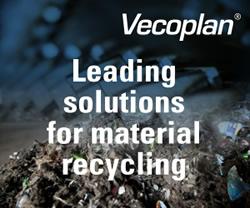I would like to point towards one combination of existing technology that I am convinced could actually do the job of lowering atmospheric carbon concentrations and thus reverse climate change
REVERSING CLIMATE CHANGE?
Steve Clemens
| I would like to point towards one combination of existing technology that I am convinced could actually do the job of lowering atmospheric carbon concentrations and thus reverse climate change |
 |
|
Steve Clemens,
Prof. Environmental Economics |
|
Is it really useless to search for ways of reversing climate change? Combating climate change proves to be a tall order in most societies. The EU has set itself a few ‘difficult’ goals, like a Kyoto Protocol commitment of 8% reduced carbon output by the year 2012, and 20% of power generation from renewable sources by 2020. By most accounts we are behind schedule on both targets. According to many people these goals are so low as to be near insignificant, but oil-, coal- and nuclear industry leaders swear by the risks to society of going too green. Personally, I fail to see how ExxonMobil’s gigantic profits ($39.500 million in 2006) are more important than the billions of people who stand to be affected by climate change in the next decades.
Going carbon-neutral is beyond reach of most companies, except for a few organizations lead by the most dedicated leaders. But is it really useless to go miles beyond carbon-neutrality and search for ways of actually reversing climate change? Granted, when it comes to reversing climate change most reports in the media cover nutty-professor hair-brained schemes like these examples below:
As Dr. Pachauri (IPCC) said during his post Nobel Peace Prize interview with CNN, there are enough existing solutions and technologies today that can do the trick, we don’t need the sci-fi options. Political will is required and missing. I would like to point towards one combination of existing technology that I am convinced could actually do the job of lowering atmospheric carbon concentrations and thus reverse climate change: bio-chp-ccs Bio stands for the use of biofuels, sometimes heavily disputed but in concept a carbon-neutral fuel. CHP stands for combined heat and power, a super-efficient technology still fighting for its rightful place in society. CCS stands for carbon capturing and sequestration, currently developed by some big oil and coal industry players, in an attempt to green up their record. The carbon-neutrality of biofuels lies in the closed nature of the carbon cycle behind it, in a nutshell: growing crops for biofuels absorb all the emitted carbon from combustion of the biofuels.
Fossil fuels have no such cyclic character: oil, coal or gas is extracted from the soil and combusted up into the atmosphere to remain there as a greenhouse gas. Ccs promotors explain the importance of their technology as closing-up the carbon cycle: fossils fuels are pumped out of the soil, captured, and then pumped back into the soil.
With bio-chp-ccs, let us ignore the chp part for simplicity, the carbon cycle is un-naturally broken, but to our benefit: growing crops for biofuels absorb carbon that has NOT been emitted by combustion, as that emission is captured and sequestered into the soil. The use of the EXISTING technologies bio-chp-ccs would result in a net absorption of carbon out of the neighboring media, i.e. the atmosphere.
Expensive? Yes. In my book, Thank You For Not Breathing, I have calculated the cost of fully reversing atmospheric carbon concentrations from the current 430ppm to the pre-industrial or natural level of 280ppm, using bio-chp-ccs, over a period of no longer than 20 years: €102,4 billion per year. An astronomical sum, by al means, but still only 1/5 of the Stern Review suggestions, which are limited to merely lowering carbon emissions and actually allows for a global temperature rise of about 2°C. There’s one reason to be reasonably optimistic about a lower probability of resistance from the fossil fuels crowd: they already support chp, and they are actively promoting ccs. That is 2 out of 3, enough to counter the traditional anti-green lobby? |
|
The content & opinions in this article are the author’s and do not necessarily represent the views of AltEnergyMag
Comments (0)
This post does not have any comments. Be the first to leave a comment below.
Featured Product




